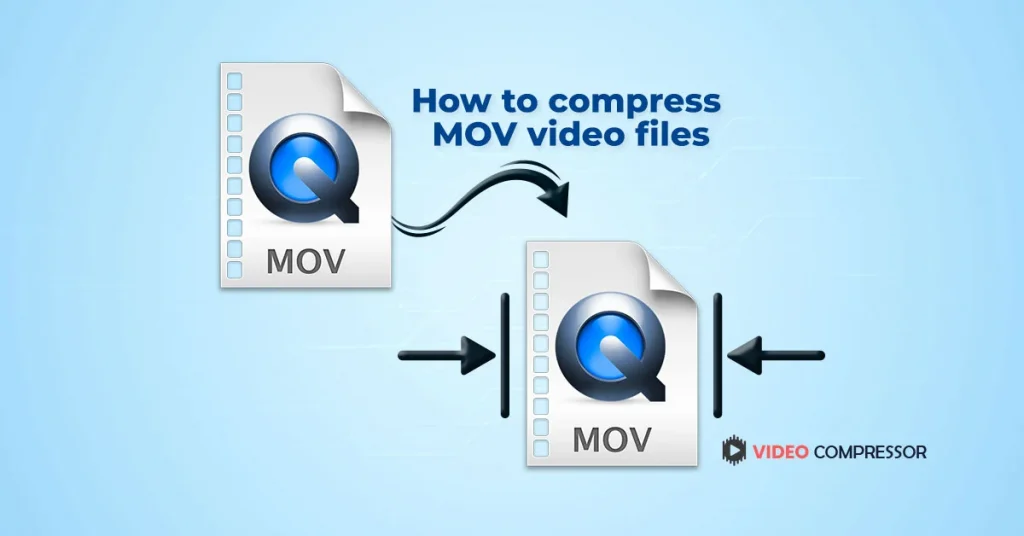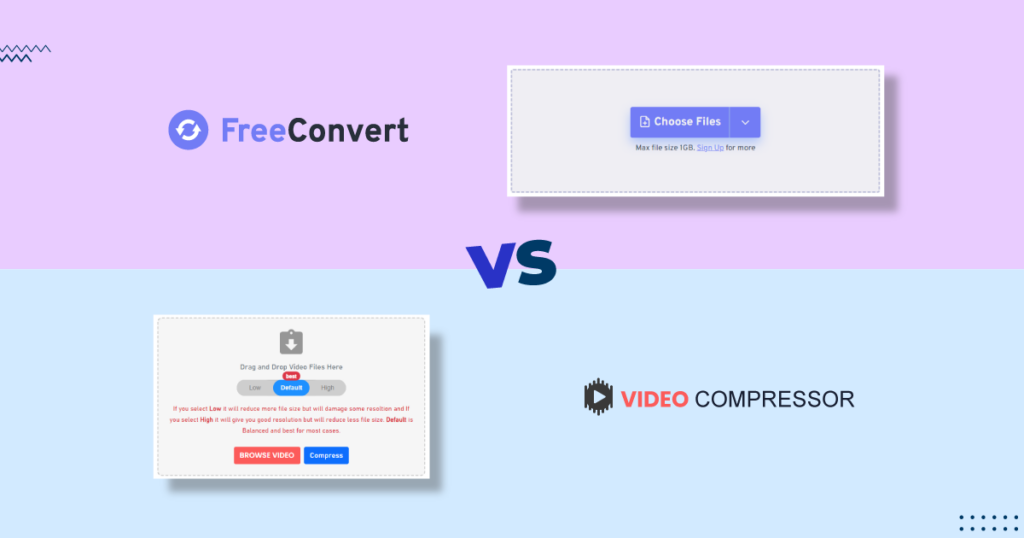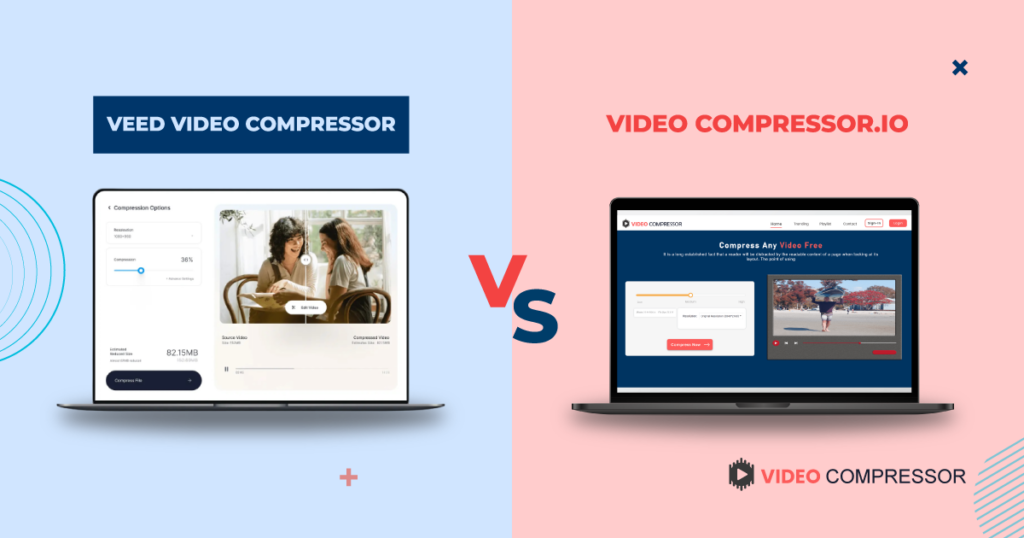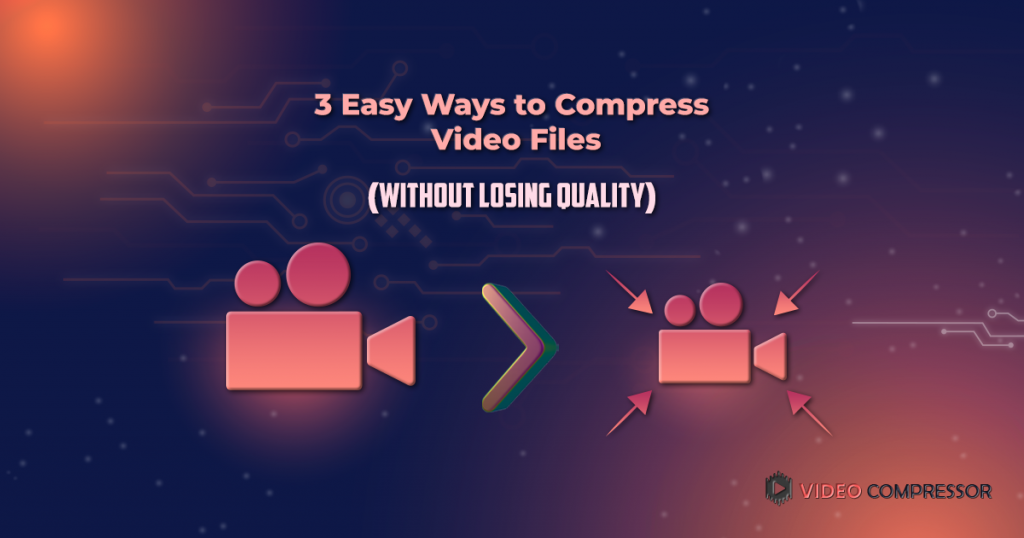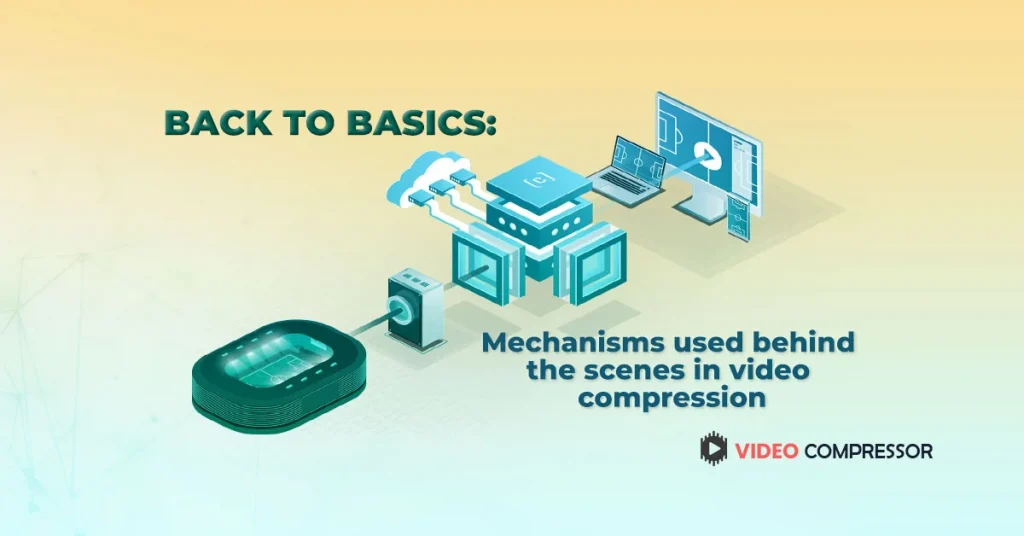Video Encoding & Compression: Why Storage & Quality Matter
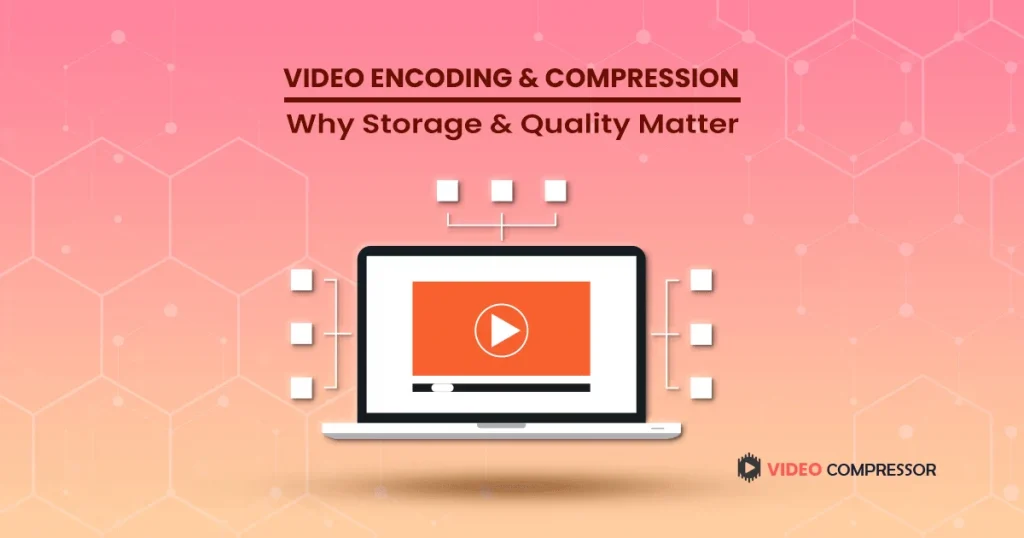
Free Video Compressor Online
The video that might possess a large size can be compress or decreased video size online free to video smaller one by video compression. With video compression of the large images, which your video might comprise, you can eliminate the most repetitive photos from the video, making it as short as possible. You can compress video for WhatsApp, video compressor for discord, video compressor for pc
If there are two identical frames, the free video compressor online will delete the one which will not be essential to the video and shall substitute it with the one about the other one.
The godsends of video compression enclose:
- More undersized file sizes
- More negligible storage demand
- Descending transmission bandwidth needs
However, just compressing a video does not produce the best content for a variety of platforms and devices. To solve this problem, video encoding, a particular kind of video compression, is used. There are many video compressor software is available on the internet.
Best Video Encoder – What is video encoding?
The process of compressing and getting your video files ready for the right playing standards and formats is called video encoding.
Although video compression reduces file size, it might affect the quality of the video. However, video encoding compress video without losing quality. Gigabytes of data are reduced to mere megabytes when watching encoded videos. Additionally, your material is made available on a variety of platforms and devices. With our revolutionary content-aware encoding technique, Harmonic has dominated the market for video encoding. The process of compressing and getting your video files ready for the right playing standards and formats is called video encoding.
Although video compression, compress video file size, it might video quality reducer. However, video encoding reduce video size without losing quality. The gigabytes of compressed videos can be video MB reducer and your video shall be compatible to be played on several video-sharing platforms. Like, convert video size from video compress 1GB video to 10MB.
What is Content-Aware Encoding?
Are you familiar with the greatest advantage of AI, that it detects the high definition and explanation of human-made content? The content-aware encoding is a tool that works on the principle of detecting the very minute detail of the video and generates the high-definition video content in the minimum space possible.
According to the type of material, or the regions of a picture where the human eye would generally focus, this optimizes encoding. Therefore, CAE encoding selects the most significant frames and discards the others rather than simply removing identical frames. The first business to create AI technologies for CAE was Harmonic. Here is a very general description of the procedure:
- To take advantage of bandwidth economies, unsupervised machine learning algorithms identify commonalities in video content.
- The amount of capacity required in the ensuing video frames is then predicted using intelligent motion estimation by machine-learning augmented algorithms.
- The total compression technique is improved using reinforcement learning algorithms over time, so it keeps evolving “autonomously” as you input more video data.
The time and expense of development are decreased by this kind of AI-powered CAE. Additionally, it provides bespoke compression algorithms rather than the current generic ones to OTT content producers and distributors. The underlying capabilities are fully made possible by video codecs, although video encoding has made several advancements over the years.
What do you mean by video codec?
The time and expense of development are decreased by this kind of AI-powered CAE. Additionally, it provides bespoke compression algorithms rather than the current generic ones to OTT content producers and distributors. The underlying capabilities are fully made possible by video codecs, even though video encoding has made several advancements over the years.
The most widespread and widely used video codecs include:
- H.264 (AVC)
- H.265 (HEVC)
- H.266 (VVC)
- AV1
- VP9
- MPEG-2
- Quicktime
- WMV
- DivX
- XviD
Once you are done with video coding the video is enclosed into a digital container which is called the video compression format.
How To compress Video file By using Online Video-Compressor?
- Open Your Browser and Search Video-Compressor.io
Firstly, Open your browser and search for Video-Compressor.io
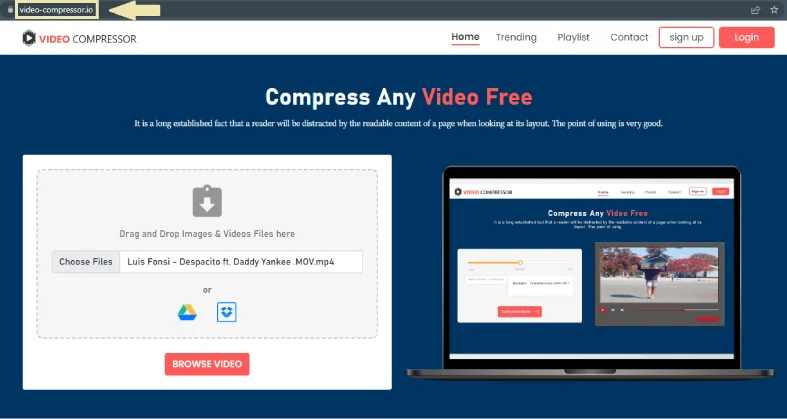
- Click on Browse Video
Then click on “Browse Video” and select your desired video.
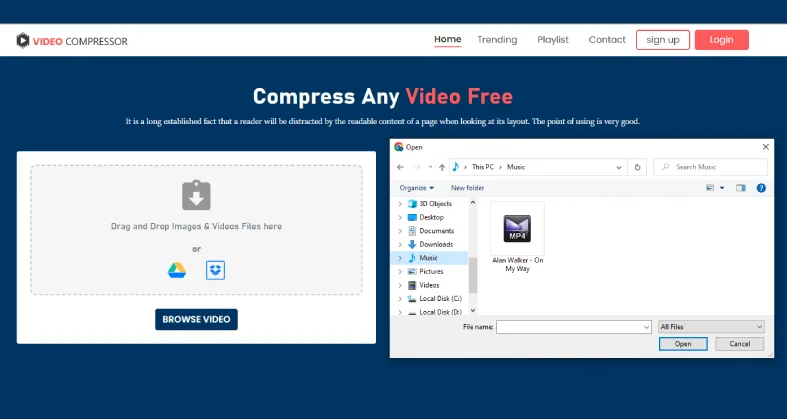
- Choose your Desired Resolution
Adjust the dimensions according to your requirements.
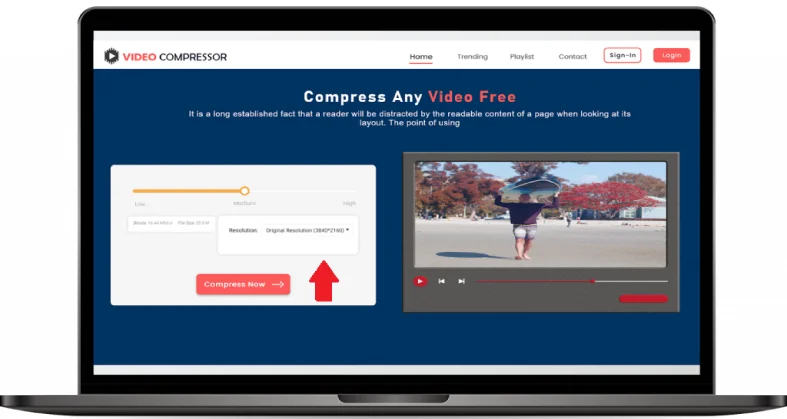
- Click on “Compress Video”
Click on compress to start the compression of video.
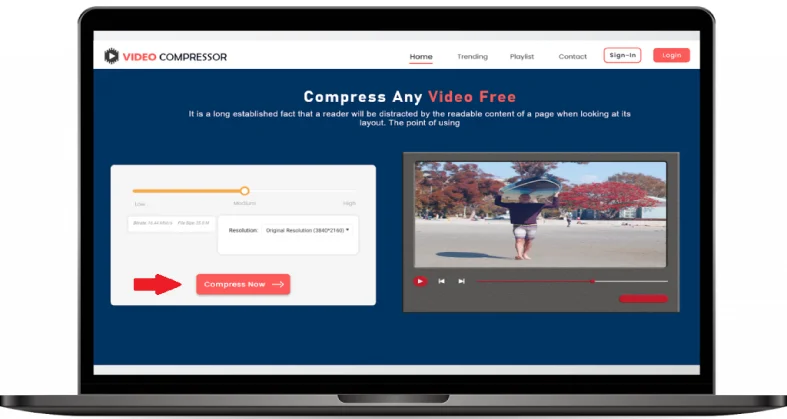
- Download your compressed video
After compression, your video will download
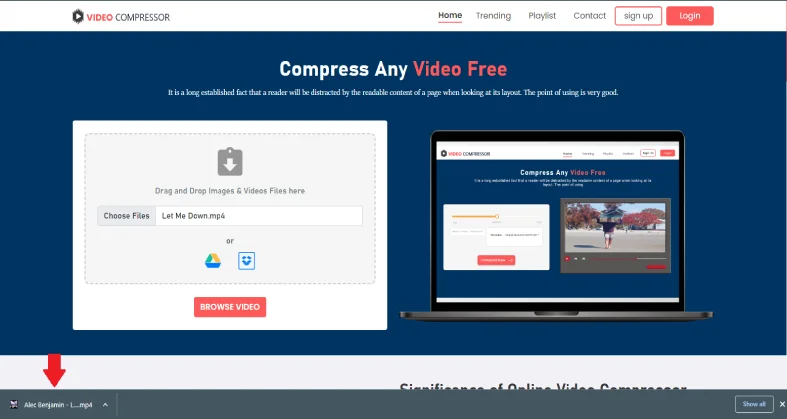
Which best video compression formats we are looking for?
The container stores the video and audio codecs as well as any additional metadata about that video stream or file (think: subtitles, closed captioning, preview images, etc.). All of these parts are kept together by the container, which also selects the devices that will accept the stream. For example, you can also compress mp4 video to smaller size online free below are the top formats for video compression include:
- Compress Video mp4
- Compress mov File
- .ts
- .wmv
- .F4v
- .3GP
All containers, codecs, or compression formats do not, however, need to be supported by playback platforms. For instance, data and codecs may be shared by.mov and.wmv files. The.wmv file, however, will playback on a Windows PC while the.mov file will playback on a Mac. The converse of this is ineffective. For this reason, multi-format encoding is crucial when streaming to a variety of devices. Additionally, for video compression to be effective, the ideal of lowering the bit rate while maximizing picture quality must be met.
What is meant by a video bitrate?
The quantity of “bits” transmitted or processed in each frame of your video over time is known as the video bitrate or data rate. The compressed data in your video frame is referred to as “bits” in this context, and the rate is often time in seconds. So, the measurement of video bitrate is in kilobits or megabits per second (Kbps or Mbps). Video quality is frequently higher when bitrates are higher. However, they will also need additional playback bandwidth and storage. The opposite is true with lower bitrates. When encoding your video, you should have an idea of your goal bitrate in mind. Constant bitrate (CBR) encoding keeps the bitrate constant throughout the entire video file or stream. However, variable bitrate (VBR) or adaptive bitrate (ABR) refers to a change in the video bitrate that takes into account.
What is the adaptive bitrate of variable bitrate encoding?
The “bits” distributed via VBR or ABR are employed in complex sections of your video (like action scenes) and fewer are used for simple ones (like static shots). Although you can prescribe a bitrate for your video, adaptive streaming feeds the most acceptable bitrate based on the witness’ internet connection’s strength and speed. As an impact, video quality is supplemented when signals are powerful. Viewers are directly switched to more inferior video quality when the signal is weak so they won’t experience cushioning uncertainties. The most acceptable performance of your video content is the one that is best regarded by your viewers. Just for that, VBR-encoded videos have more prominent visual and technical differentiae than CBR-encoded ones.
What’s the difference between transcoding and video encoding?
Although they are sometimes confused, video encoding and video transcoding are not the same things. Video encoding is the process of compressing that reduce to make video smaller size and more portable for playing. Re-encoding video files into multiple formats is known as transcoding. Transcoding, therefore, equals encoding, but not always.
Why is video distribution dependent on encoding and transcoding?
Transcoding and encoding are preliminary for video compression as they perform the given significant purposes:
- Reduce video file size online to help you save money on hosting and storage costs.
- Enhance streaming buffering. You can decrease bandwidth requirements (for delivery) and enhance viewing quality by achieving a specified bitrate (less buffering).
- So that you can monetize current material, and convert outdated assets into contemporary forms.
- To deliver the best information to any screen, adjust the aspect ratio and resolution. For optimal viewing, videos will adjust to the device’s display size.
- To deliver content that complies with regional audio regulations, change the audio format or quality.
- Optimize video files for playback on computers, tablets, smartphones, smart TVs, CTVs, and older devices by making them compatible with specific platforms. Additionally, you’ll be able to distribute content to affiliates and increase your revenue.
If you want to video compressor download this is available on the internet everywhere
You May Also Like
What are Video compression standards and how one can exploit them?
Back to basics: Mechanisms used behind the scenes in Video Compression


